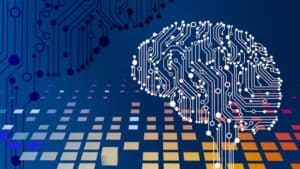In the fast-moving world of data, one thing has become clear—real data isn’t always enough. Businesses require more of it, faster and with no privacy baggage. That’s where synthetic data steps in. Instead of waiting months to collect, scrub, and prepare real-world datasets, teams are now creating artificial data that acts just like the real thing. And in 2025, the tools that we use to do this are more intelligent, more usable, and are actually more accessible than we might expect.
Let’s walk through some of the best synthetic data generation platforms you can try this year, and why they might be worth adding to your toolkit.
K2view
When it comes to synthetic data platforms that truly cover the entire lifecycle, K2view deserves a serious look in 2025. In contrast to other tools that address a specific part of the puzzle, K2view is a standalone solution that handles all of data extraction, generation, masking, cloning, and post-processing. This end-to-end approach makes it especially appealing for enterprises that don’t just need data—they need a complete, reliable system for handling it.
What sets K2view apart is the way it blends AI-powered and rules-based generation into one seamless platform. On the AI side, it can handle training data subsetting, automatically mask personally identifiable information (PII), and even prepare datasets for large language model (LLM) training.
At its very essence, K2view’s patented entity-based technology guarantees referential integrity is never violated. The system develops a schema, a data model blueprint, which holds everything together in a unified and correct manner. It’s not hard to understand why Gartner positioned K2view as a Visionary in its 2024 Magic Quadrant for Data Integration.
Mostly AI
Mostly AI has been a pioneer of synthetic data, and in 2025 it remains a frontrunner. What sets it apart is its emphasis on high-quality, privacy-friendly tabular data that can be utilized by businesses with complete confidence. Its platform enables organizations to train AI models with distributions imitative of real-world ones, all the while not compromising compliance.
Another factor why Mostly AI remains a star is its availability to non-technical teams. Rather than overwhelming people with code-intensive workflows, it presents them with a natural interface for producing and experimenting with datasets. That makes them particularly suitable for banks, insurers, and healthcare organizations where privacy regulations are stringent but there is still a need for innovation.
Gretel.ai
While Mostly AI is the business titan, Gretel.ai is the programmer’s sandbox. It has established a solid niche in 2025 by emphasizing ease of integration and flexibility. It is effective with both structured and unstructured data, and there are APIs which programmers can easily insert into their current workflows.
What really puts Gretel on the map is its openness. It has leaned into open-source projects and offers pre-trained models, making it a favorite among startups and research teams who want to experiment without reinventing the wheel. And while it’s developer-focused, it hasn’t ignored privacy—its differential privacy features mean you can generate datasets while protecting the digital information of your business.
Synthea
Healthcare is one of the toughest industries when it comes to data, and Synthea has been a lifesaver. This open-source platform focuses specifically on generating synthetic patient records. By simulating everything from demographics and medical histories to hospital visits and treatments, Synthea provides a goldmine for researchers and medical AI developers.
What’s amazing in 2025 is just how widespread its adoption has become. Hospitals, universities, and startups are all employing it to try out new systems without ever handling a physical patient’s chart. And that not only guarantees compliance but accelerates innovation in an industry which urgently requires it.
DataGen
In the world of computer vision, DataGen has made a name for itself by generating synthetic images and video data. As of 2025, its biggest strength is its ability to create photorealistic human data for training AI systems. Think facial recognition, retail analytics, or AR/VR applications. DataGen can generate the visuals needed to train these systems without using real people’s faces. This has colossal privacy implications, but it’s also a question of scale.
Real-world image data sets are few and costly to annotate, but synthetic ones can be produced on a whim. That translates into faster, more diverse, and more controllable data sets for businesses needing visual AI training at scale.
Wrapping it Up
If you’re working with data in 2025, ignoring synthetic data platforms is like ignoring cloud computing a decade ago. Not only are they making life easier, they are becoming a necessity to remain competitive.
It is possible that synthetic data will never completely replace real-world data, but in a world wherein privacy and speed are increasingly becoming important factors, it is the smart move forward.




